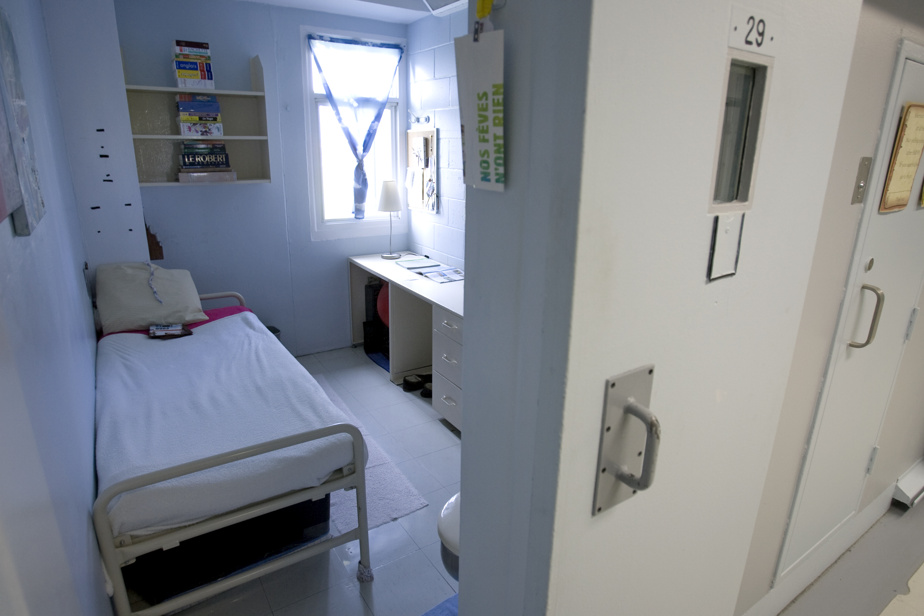Aboriginal development work worth $6.1 million, including a longhouse and a traditional tent, is underway at the Archambault penitentiary in Sainte-Anne-des-Plaines. More millions wasted, according to Correctional Investigator Ivan Zinger, who believes that the money should instead be invested in other ways to truly help Aboriginal people.
It is through a CNESST occupational health and safety form that The Press was informed of the work in progress at the Sainte-Anne-des-Plaines penitentiary. It simply states that it is a new building of 440 m2 and that construction, which began in May, will take a year.
Additional information has been requested from Correctional Service Canada.
“In particular, it is planned to adapt and build new premises that better meet the cultural needs of the Aboriginal clientele, thus allowing the holding of ceremonies or additional cultural activities,” writes Jean-François Mathieu, communications manager for Quebec.
One of Correctional Service Canada’s organizational priorities is to ensure the delivery of effective and culturally appropriate interventions to Aboriginal offenders to facilitate their reintegration into society.
Jean-François Mathieu, Regional Communications Manager, Correctional Service Canada
How many Aboriginal inmates are there at Archambault right now? Mr. Mathieu indicates that the institution “guards approximately 140 Aboriginal inmates (medium, minimum sectors and Waseskun Healing Centre)”. He adds that the place is designated as an “Aboriginal Intervention Center” for Quebec.
Mr. Mathieu adds that his department is also “actively implementing” other measures, “such as hiring Aboriginal staff, adapting [ses] physical facilities, the hiring of elders or cultural bearers, the maintenance and development of [ses] external Indigenous partnerships”.
Such hirings were already made in 2019 and were the subject of an investigation in The Press. It was about self-declared elders getting lucrative penitentiary contracts when they weren’t recognized by an aboriginal community. The Press also reported that hundreds of Quebec criminals also self-declared Aboriginal to benefit from certain advantages, such as a faster reassessment of their security classification.
Indicators that are getting worse
Beyond these questions, there remains the fundamental problem of the overrepresentation of Aboriginal people in penitentiaries, recalls Ivan Zinger. “They represent 32% [des détenus dans les] penitentiaries, while Aboriginal people make up 5% of the Canadian population,” he observes, noting that half of the women in penitentiaries are Aboriginal.

PHOTO JUSTIN TANG, THE CANADIAN PRESS ARCHIVES
Correctional Investigator of Canada Ivan Zinger
In Canada, there are 4,100 Indigenous inmates in penitentiaries, and for years the Canadian government has spent millions on its cultural programs for Indigenous peoples, and this, “without results” on the indicators related to these populations, argues Mr. Zinger.
In fact, he says, it’s getting worse. Recidivism rates are much higher among Aboriginal inmates, as are suicide attempts and self-harm. They are also overrepresented in administrative segregation units, they are subject to the use of force more often, they end up in higher security establishments and their sentences are longer, lists Mr. Zinger.
He goes on to say that the kind of cultural development such as that which is underway in Sainte-Anne-des-Plaines “is contrary to the recommendations” that he has been making for several years in his reports.
In his most recent annual report, Mr. Zinger wrote, “The use of Aboriginal social history in decision-making continues to be as inconsistent and superficial” as it was 10 years ago.
Mr. Zinger believes that much of the money invested in penitentiaries should instead be redirected to Aboriginal communities to fight crime. Also, since the penitentiaries are unable to improve their indicators concerning them, “we must favor the transfer of offenders to healing centers managed by the natives” when possible.
These centers – which include apartments – were created over the years due to concerns of Aboriginal people that “programs offered in regular federal institutions are not working for Aboriginal offenders”, can we read on the Correctional Service Canada website.
There are ten such centers in Canada. Six are managed by Aboriginal communities or organizations, and four by the correctional services themselves. According to Mr. Zinger, the number of places in these centers remains insufficient.
Before transferring inmates to such pavilions, Correctional Service Canada says it first assesses “thoroughly the risk that this offender poses to public safety”.
Individual life plans that are very focused on the needs of Aboriginal people are, for example, developed in these centers that are very focused on Aboriginal healing and spirituality.
Reached earlier this week, the Assembly of First Nations (many of whose members are struggling with forest fires) was unable to comment on the new developments in Archambault.
With William Leclerc, The Press
